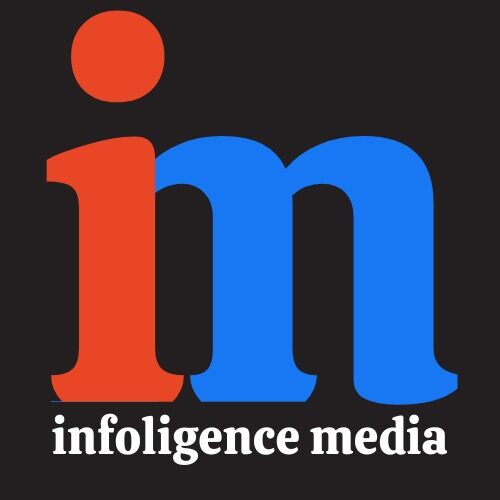In the ever-growing digital marketing landscape, two giants stand out: Facebook Ads and Google Ads. Each platform boasts impressive features to connect you with your ideal customers and propel your business forward. However, they shine brightest in different areas. This guide will break down the core functionalities of each, empowering you to choose the perfect platform to supercharge your marketing strategy.
What is Facebook Ads?
Facebook Ads is the platform for running paid advertisements on the social network Facebook. It allows businesses to create messages to promote their products or services. With Facebook Ads, you can create eye-catching text, image, or video promotions that appear on Facebook, Instagram, and even other websites. The best part? You can target exactly who sees those ads. By setting filters for age, location, interests, and even browsing habits, Facebook puts your message in front of the people most likely to care. Therefore, whether you want to build brand awareness, drive website traffic, or make more sales, Facebook Ads can be a powerful tool to achieve your goals.
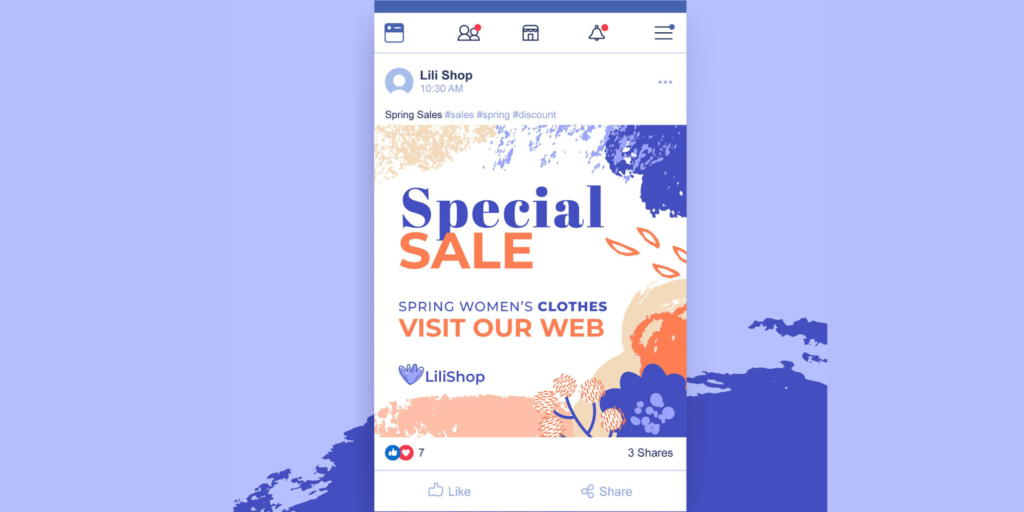
How Facebook Ads Works
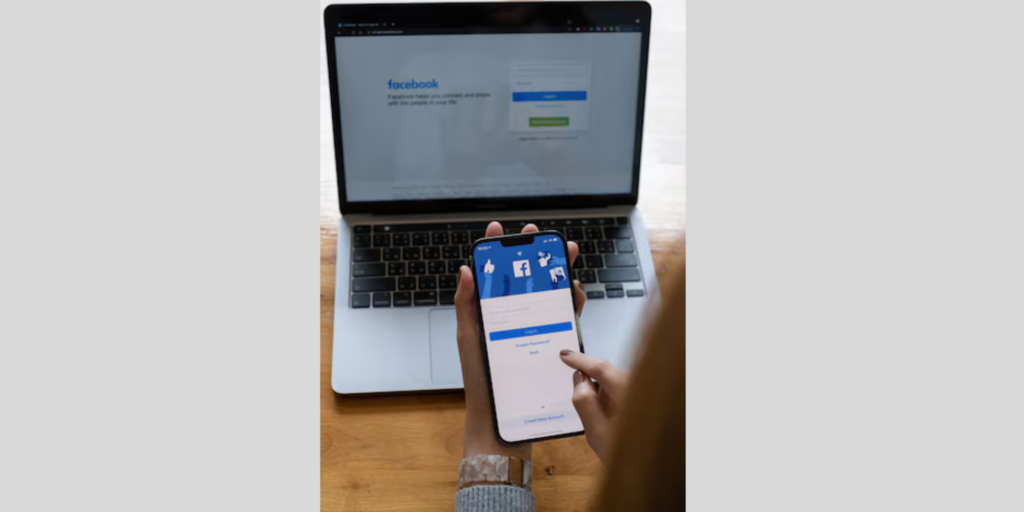
Setting Your Goal:
What do you want your ad to achieve? More website visitors? Increased sales? More likes on your Facebook page? Choose your campaign objective first.
Picking the Right Format:
Images, videos, slideshows, Facebook offers various ad formats. Pick the one that best showcases your product or service.
Finding Your Audience:
Who are you trying to reach? Facebook lets you target people based on age, location, interests, and more. Be specific to reach the right people.
Budgeting and Bidding:
Decide how much you’re willing to spend on your ad campaign. You can also choose how Facebook spends your budget (daily or total) and how it prioritizes showing your ad.
The Ad Auction:
When someone scrolls through their feed, Facebook holds a mini-auction to see which ads get shown. Your bid, ad quality, and user preferences all play a role.
Ad Relevance Score:
Facebook scores your ad based on how relevant it is to your target audience. Higher scores mean your ad gets seen more and costs less.
Picking Your Spot:
Decide where you want your ad to appear – Facebook feed, Instagram stories, or other apps. Facebook can also optimize placement automatically.
Tracking Results and Making Tweaks:
See how your ad is performing! Track clicks, conversions, and other metrics. Use this info to improve your targeting, ad format, or budget over time.
Benefits of using Facebook Ads :
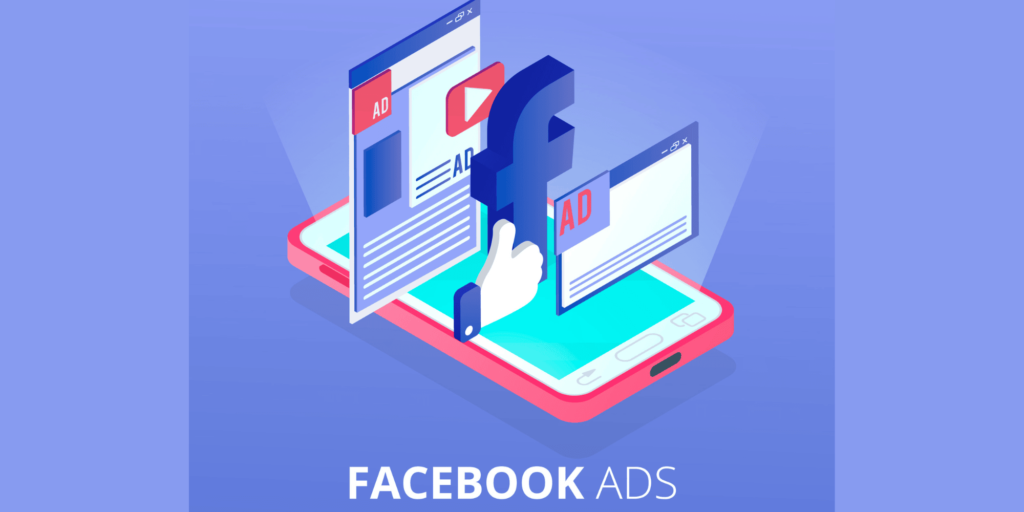
Facebook ads provide numerous advantages for businesses seeking to connect with their target audience and accomplish marketing goals.Here’s how Facebook ads can empower your marketing strategy:
1. Precise Audience Targeting :
Facebook has a massive amount of user data, and businesses can take advantage of this! With Facebook Ads, you can target people very precisely. You can choose who sees your ads based on things like age, location, what they’re interested in, and even how they use Facebook. This tailored approach ensures reaching individuals most inclined to engage with their products or services.
2.Cost Efficiency :
Unlike traditional advertising platforms such as TV or print media, Facebook ads offer a more cost-effective solution. Businesses can establish their budgets and bidding strategies, granting them flexibility and control over advertising expenses.
3.Widespread Reach and Visibility :
With a user base exceeding 2 billion worldwide, Facebook provides a substantial platform for expanding brand visibility and reaching a broad audience. Ads can be displayed across users’ news feeds, Instagram (a Facebook-owned platform), Messenger, and the Audience Network, maximizing exposure.
4.Enhanced Engagement and Interaction :
Facebook ads stimulate user engagement through likes, comments, shares, and clicks, fostering brand awareness and driving traffic to websites or landing pages. Various ad formats, including carousel ads, video ads, and interactive polls, enrich user interaction.
5.Measurable Performance :
Facebook’s Ads Manager furnishes comprehensive analytics, enabling businesses to monitor metrics like reach, impressions, clicks, conversions, and return on ad spend (ROAS). This data empowers businesses to assess campaign effectiveness and make data-driven decisions for future strategies.
6.Tailored Customization :
Facebook ads offer a broad spectrum of customization options, empowering businesses to align ads with their brand identity and marketing objectives. Whether adjusting ad copy, imagery, placements, or targeting criteria, businesses can craft ads that resonate with their target audience.
7.Retargeting Opportunities :
Facebook’s retargeting functionality empowers businesses to reconnect with users who previously interacted with their website, app, or Facebook page. This ensures continued engagement with potential customers, encouraging them to take further actions such as purchases or newsletter sign-ups.
What is Google Ads?
Google Ads, previously known as Google AdWords, stands as a pivotal online advertising tool developed by Google. It serves as a platform for businesses to craft and deploy ads visible on Google’s search engine results pages (SERPs) and across its partner websites, apps, and within the Google Display Network.
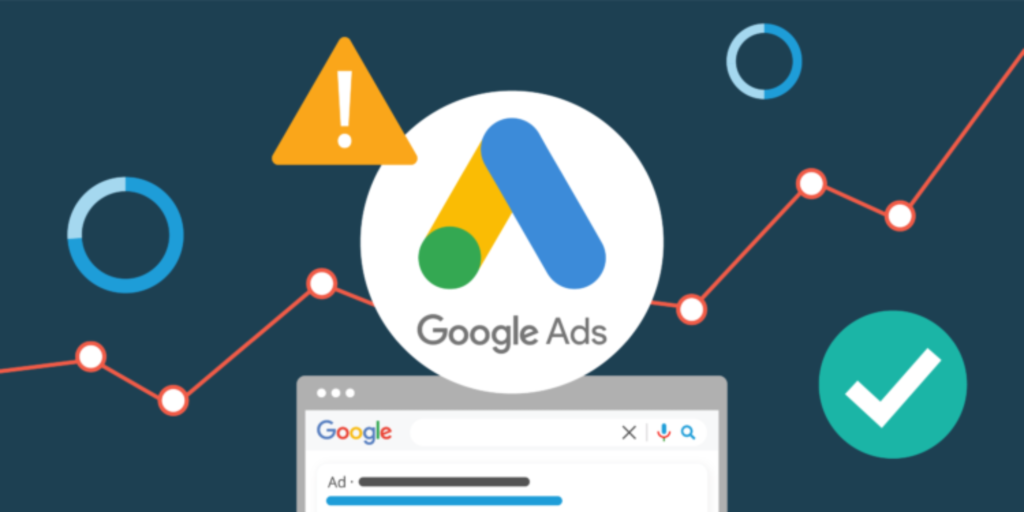
How Google Ads Works
Ad Crafting :
Advertisers fashion text, image, or video ads through Google Ads‘ user-friendly interface. They delineate their desired audience, establish budgets, and select the preferred locations for ad placements.
Keyword Selection :
Advertisers pinpoint pertinent keywords linked to their offerings. When users search for these keywords on Google, ads may surface above or below the organic search results.
Ad Auction :
Google conducts an ad auction when a user initiates a keyword search. This process determines which ads will appear on the SERP and in what sequence. Key factors considered include bid amounts, ad quality, and relevance to the user’s query.
Ad Positioning :
Google computes an ad’s Ad Rank, dictating its placement on the SERP. Ad Rank hinges on bid amounts, ad quality (determined by anticipated click-through rates, ad relevance, and landing page experience), and the envisaged impact of ad extensions and other formats.
Cost-Per-Click (CPC) Bidding :
You only pay Google when someone clicks your ad. You set a maximum amount you’re willing to pay for each click, but the actual cost might be lower. This depends on how competitive the keywords you target are and how good your ad is.
Campaign Oversight :
Advertisers monitor and fine-tune their campaigns in real-time via Google Ads‘ suite of reporting and analytics tools. They track metrics encompassing impressions, clicks, click-through rates (CTRs), conversion rates, and return on investment (ROI), facilitating informed adjustments for campaign enhancement.

Benifts of using Google Ads :
Google Ads offers numerous benefits for businesses looking to enhance their online presence and drive results:
1.Customized Targeting :
Reach your ideal customers by tailoring your ads to their interests, location, and online behavior. Google Ads ensures your message reaches the people most likely to care.
2.Immediate Exposure :
Ads show up on Google’s search results and across its Display Network, instantly putting businesses in front of potential customers actively searching for what they offer.
3.Flexible Budgeting :
Businesses have complete control over their ad spending, allowing them to set budgets that match their financial capacity and marketing objectives, whether on a daily or campaign basis.
4.Cost-Efficiency :
With Google Ads, businesses only pay when someone clicks on their ads, making it a cost-effective solution. Moreover, they can adjust their bids to make the most of their budget and maximize returns.
5.Trackable Performance :
Google Ads provides detailed analytics and reporting tools, allowing businesses to monitor their campaign performance in real-time. Metrics like clicks, impressions, CTR, conversions, and ROI are easily accessible for analysis.
6.Boosted Website Traffic :
Google Ads can drive relevant traffic to a business’s website, increasing the chances of conversions and sales by targeting specific keywords and audiences actively seeking their offerings.
7.Improved Brand Visibility :
Exposure on Google’s search results and Display Network can enhance a business’s brand awareness, even if users don’t click on the ads, leading to greater recognition over time.
8.Flexible Campaigns :
Make adjustments to your campaigns on the fly. Change your ad content, target new audiences, or refine your bidding strategies – all to optimize performance and stay ahead of the curve.

Similarities between Facebook Ads and Google Ads :
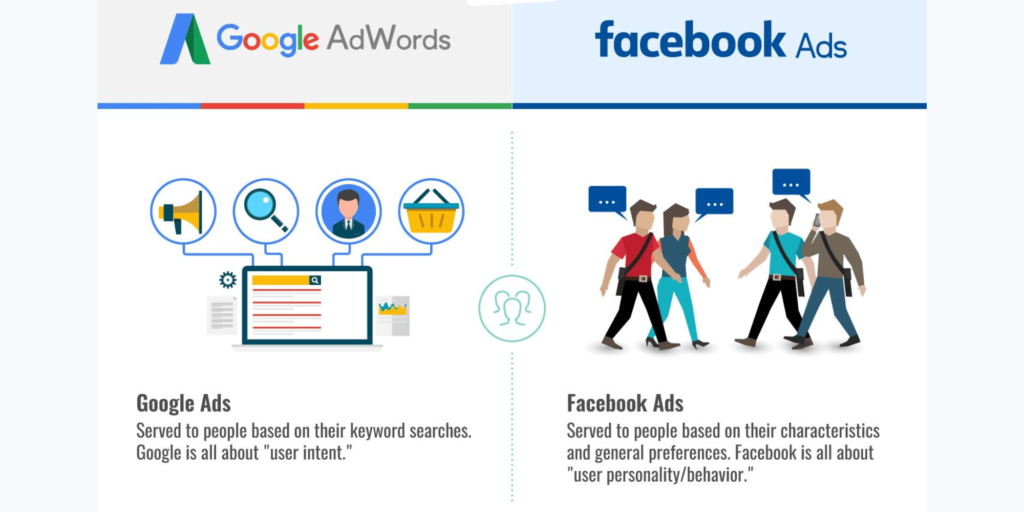
Targeting Options :
Both platforms offer advanced targeting options, allowing advertisers to reach specific demographics, interests, behaviors, and geographic locations. This similarity empowers advertisers to customize their content effectively for their desired audience.
Ad Formats :
Both Facebook Ads and Google Ads provide a range of ad formats, including text, image, video, carousel, and interactive ads. This variety in ad formats gives advertisers the flexibility to select the most suitable content patterns for their campaign goals and creative assets.
Engagement Metrics :
Both platforms furnish advertisers with engagement metrics such as clicks, impressions, CTR, conversions, and ROI. This similarity enables advertisers to assess ad performance and optimize their content strategies accordingly.
Ad Optimization :
Both Facebook Ads and Google Ads offer features and tools for ad optimization. Advertisers can experiment with different content patterns, ad creatives, and messaging to identify the most effective approaches for engaging their target audience and driving conversions.
Remarketing :
Both platforms support remarketing capabilities, allowing advertisers to reconnect with users who have previously engaged with their ads or website. This commonality enables advertisers to reinforce their messaging and content patterns to users who have demonstrated interest in their products or services.
Difference between Facebook Ads and Google Ads :
Here’s a table outlining the key differences between Facebook Ads and Google Ads:
Feature | Facebook Ads | Google Ads |
Advertising Platform | Runs on Facebook, Instagram, Messenger, and Audience Network | Appears on Google’s search results, websites within its Display Network, and YouTube |
User Intent | Targets users based on their interests, behaviors, and demographics | Reaches users actively searching for products or services related to what advertisers offer |
Targeting Options | Offers targeting based on demographics, interests, behaviors, and connections | Provides options like keywords, location, device type, audience lists, and demographics |
Ad Formats | Supports various formats like images, videos, carousels, slideshows, and collections | Offers text, image, video, responsive, and app promotion ads |
Cost Structure | Can be priced based on cost-per-impression (CPM) or cost-per-click (CPC) | Primarily uses a cost-per-click (CPC) model, though other options are available |
Ad Placement | Appears in users’ News Feeds, Stories, Messenger, Instagram feeds, and Audience Network placements | Shows up in Google search results, websites across its Display Network, YouTube videos, and in-app placements |
Crucially, determining whether Facebook Ads or Google Ads is better relies on several factors, including your business goals, target audience, budget, and product/service type. Each platform has its own strengths and weaknesses, and consequently, their effectiveness depends on your unique situation.
In practice, many businesses achieve success by utilizing both Facebook Ads and Google Ads together. By leveraging the advantages of each platform and customizing your tactics to match your goals, you can optimize your advertising impact across various channels. Testing both platforms, evaluating outcomes, and adapting strategies accordingly is crucial for finding the most effective approach for your business.
